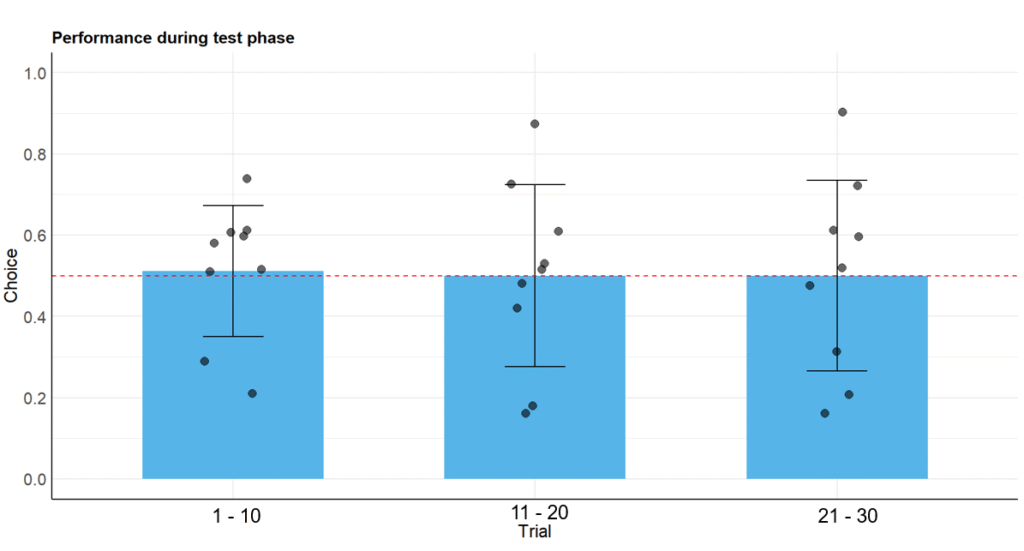The aim of this study was to explore if dogs could apply causal reasoning or if their behavior was better described by associative learning mechanisms. Overall, the results show that while the dogs were able to learn color-based associations during the training phases, their performance during Phase 4 did not statistically indicate causal decision-making. Specifically, the dogs did not adjust their choices in Phase 4 in a way consistent with understanding the causal relationships introduced during training. Instead, their choices made appear random. These findings suggest that although the dogs acquired and retained associative information during training, they did not reorganize this knowledge to solve the novel problem in a causal way. This outcome supports the interpretation that associative learning, rather than causal understanding seem to drive the dogs’ decision making.
What is interesting is the fact that the choice was random. If a dog had understood the link between colors in phase 2, I would expect it to update its choice in phase 4 based on what it learned in phase 3. If it ignored the new information, it would stick to its original association. However, the dogs’ behavior in phase 4 seemed random. One possible reason is second-order conditioning, where a stimulus becomes linked to a reward through another already paired cue. In this case, both sets of color cues may have been connected to the final reward, but not strongly tied to each other. This might explain the mixed or random choices made in phase 4. As the final choice was neither the associated color from phase 2 (the graph would show the Choice as 0) or the other color (Choice as 1 in the graph) I can tell that phase 3 has had an effect on the information from phase 2 but in what cappacity it changed the final outcome of phase 4 can not be said.

Final remarks
In conclusion, my results fail to demonstrate causal reasoning in dogs. I conclude that something has occurred with the information gained between Phase 2 and 4 but exactly what cannot be certain. Given the potential flexibility of associative reasoning, additional research using learning models to gain a better understanding of potential variables that could affect how different stimuli chain as well as how these are affected by extinction and reversal learning could be a vital path for continued research.